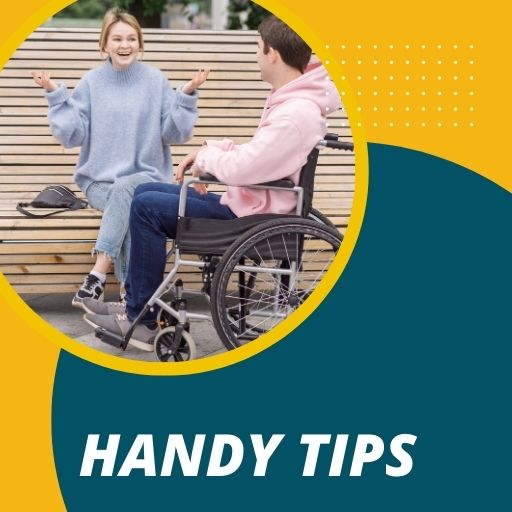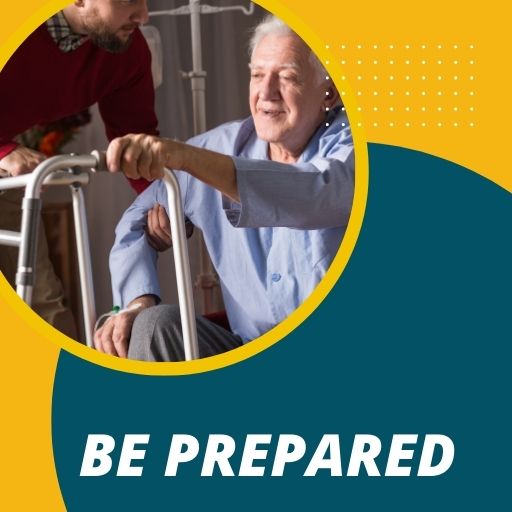People who use wheelchairs or other mobility devices.
People who use wheelchairs have different disabilities and varying abilities. Some can use their arms and hands.
Some can get out of their wheelchairs and even walk short distances.
People who use wheelchairs are individuals, not equipment. Don’t lean over them to shake another persons hand or to ask a wheelchair user to hold coats.
Respect Their Space
Don’t push or touch a person’s wheelchair, it’s part of her personal space.
If you help someone down a curb without waiting for instructions you may make the person fall out of their chair, also you may detach the chairs parts if you lift it by the handles or the footrest.
I
Make Your Business Accessible
Keep ramps clear and accessible doors to your building unlocked.
Displays should not be in front of entrances, waste baskets should not be in the middle of the aisles and boxes should not be stored on the ramps.
Be Aware
Be aware of a person’s reach limits. Place as many items as possible within their grasp. And make sure there is a clear path of travel to shelves and display racks.
If the service counter at your place of business is too high for a person using a wheelchair to see over, step around it to provide service.

These Handy Tips Are Helpful
When talking to a person using a wheelchair, grab your own chair and sit at her or his level. If that’s not possible, stand at a slight distance, so that she or he isn’t straining their neck to make eye contact with you.
Have a clipboard handy if filling in forms or providing signatures is expected.
If your building has different routes through it, be sure that signs direct people to the accessible routes around the facility.
People who use canes or crutches also need to know the easiest way to get around a place, but stairs may be easier for them than a ramp.
Ensure that employees and receptionists can answer questions about the most accessible way around the building and grounds, including the location of lifts if they are available.
People who use canes or crutches need their arms to balance themselves, so never grab them.
People who have limited mobility may lean on a door for support as they open it. Pushing the door open from behind or unexpectedly opening the door may cause them to fall.
Even pulling out or pushing in a chair may present a problem. Always ask before offering help.
If you offer a seat to a person who has limited mobility, keep in mind that chairs with arms or with higher seats are easier for some people to use.
Falls are a big problem for people who have limited mobility. Be sure to set out adequate warning signs after washing floors.
Also put out mats on rainy or snowy days to keep the floors as dry as possible. (Make sure they don’t bunch up and make the floor impassable.
People who do not have a visible disability may have needs related to their mobility. For example, a person with a respiratory or heart condition may have trouble walking long distances or walking quickly.
Be sure that your family attraction, hotel or restaurant has ample benches for people to sit and rest on.
Some people have limited use of their hands, wrists or arms.
Be prepared to offer assistance with reaching, grasping or lifting objects, opening doors and display cases, and operating vending machines and other equipment

